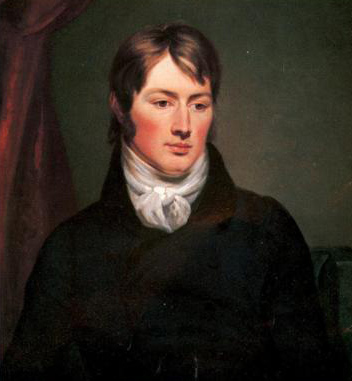John Constable is one of the most famous landscape painters in European art history.
Inspired by the English Countryside
Suffolk-born Constable helped to draw attention to the beauty of this part of the UK. His career was almost entirely devoted to landscape painting, similarly to the work of fellow Brit, JMW Turner.
Constable held a deep love for his surrounding countryside, and this passion was the drive behind his own romantic style. Few artists have been as connected to their artistic inspiration as Constable, the likes of Albert Bierstadt in the US being one such example.
Role in the Romanticist Movement
The Romanticists played a significant role in establishing landscape painting as a academically respected art form, when previously the likes of allegorical or portraits had ruled the roost almost entirely.
Turner, Constable and others like French painter Eugene Delacroix would underline the qualities found within this expressive movement.
As the artist's confidence and financial security grew, he was more willing to travel outside of his East Anglian bubble to capture other British locations in his work. His work continued to be typically English in style, though, just with alternative beauty spots made use of - see Salisbury Cathedral, Hampstead Heath and Waterloo Bridge for example.
Switch to London
Constable's time in London was a necessary evil that brought him many new contacts which would help him to develop his reputation - opportunities which simply would not have come his way in rural Suffolk. Besides those regions, he also spent time in Staffordshire, Derbyshire and the South West.
His original inspiration, the surrounding areas of childhood Suffolk, Dedham Vale, has now become known as 'Constable Country', a fitting tribute to an influential artist. It reminds us of American mountains being named after several different members of the Hudson River School, such as Thomas Cole and Albert Bierstadt.
Aside from classic oil paintings such as The Hay Wain, there were also other career highlights which took in alternative media. Many stunning pencil and ink sketches remain, plus multiple etchings. The strong draughting skills also provided the basis behind his elaborate oil work.
Rise of British Art on the International Stage
The impact felt internationally by the work of Turner and Constable have placed them at the forefront of British art history, joined by the Young British Artists of the 20th century, as well as Pre-Raphaelites such as John William Waterhouse and John Everett Millais.
Constable's work would initially receive a warmer reception in France, where the artist would receive various awards for his contributions to landscape art. This perhaps reflects how the French were more modern in outlook at this time.
France's own master of landscapes, Claude Monet, was known to have been influenced, in part, by the work of British Romanticists like Constable and Turner. They themselves had taken in elements from Claude Lorrain, ensuring a persistent to-and-thro of artistic ideas between the two countries.
Career Highlights
The Hay Wain remains the most famous of all his paintings, and was well deserving of the Gold Medal awarded to Constable by Charles X. It captures the quintessential sleepy English countryside, and serves as his signature artwork, as Whistlejacket did for George Stubbs and Fighting Temeraire had for William Turner.
Constable spent sometime teaching others of both his technical skills and also more on the mind behind it. He would encourage others to paint from their imagination, rather than just their eyes. What had gone before or been seen before should not dictate your future work.
This approach was fundamental to differentiating Romanticist artists like Constable from those of the Realist movement, such as Repin and Bouguereau.
Some of the artist's other mediums would demonstrate even more creativity and artistic vigour. His watercolours and sketches, for example, had more aggressive brush and pencil work as compared to his finished oil paintings.
Constable would spend time studying atmospheric changes to his Suffolk skyline. His artwork would aim to capture the changes across seasons, and allow scientific research into whatever he uncovered.
The artist would use shorter, more abrupter strokes to capture the feeling of aggressive weather. His use of light would also be crucial here. Constable would sometimes work outside to best capture these scenes, which was unusual for landscape painters at that time.
One helpful aspect for followers of his career were notes that he would often pencil in on the back of his artwork. For example, with his weather study pieces, he might include information such as date, wind direction and approximate humidity.




